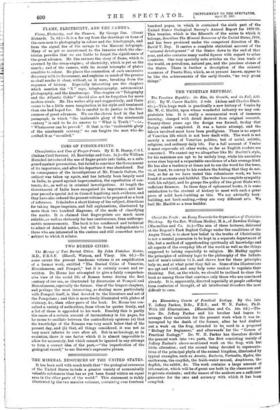TWO BURIED CITIES.
The Mirage of Two Buried Cities. By John Fletcher Horne, M.D., F.R.S.E. (Hazell, Watson, and Viney. 10s. 6d.)—To some extent the present handsome volume is an amplification of a former work, entitled "The Buried Cities of Vesuvius, Herculaneum, and Pompeii," but it is entirely recast and re- written. Dr. Horne has attempted to give a fairly comprehen- sive view of the social life of Roman towns during the first century of our era, as illustrated by discoveries at Pompeii and Herculaneum, especially the former. One of the longest chapters, and perhaps the most interesting, as dealing more particularly with Pompeii itself, is that devoted to the literature and art of the Pompeians ; and this is more freely illustrated with plates of statuary, &c., than other parts of the book. Dr. Horne has con- sulted a variety of authorities, from whom he quotes freely, and a list of these is appended to his work. Possibly this is partly the cause of a certain amount of inconsistency in his pages, for he seems to oscillate between the contradictory opinions (a) that the knowledge of the Romans was very much below that of the present day, and (b) that, all things considered, it was not so very much inferior to ours after all. But in archteology, as in evolution, there is one factor which it is almost impossible to allow for accurately, but which cannot be ignored in any attempt to form a correct idea of the past,—" the imperfection of the geological record," to use Darwin's expressive phrase.






















































 Previous page
Previous page